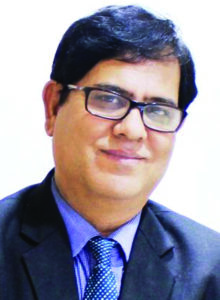
The ejusdem generis rule states that the meaning of any general term depends upon the specific words that go before it. The ejusdem generis rule is a construction principle based on context. It provides that general words that follow particular words refer to things of the same kind’ (‘ejusdem generis’) as the particular words. For example, the policy covers loss to cars, trucks, tractors, and other motor-powered vehicles, all land-based vehicles. Naturally, it would not cover loss by boat, steamer, ship, helicopter or aero plane as they are water- or air-based vehicles. Another rule of context is ‘expressio unius est exclusio alterius’ (‘making sure one thing implies the exclusion of other things’ – those which are not specified). So, where explicit words are used that are not followed by any general words, the provision in question applies only to the things specified.
The case between National Insurance Company Ltd. vs The Chief Electoral Officer on 8 February 2023 (Supreme Court of India) discusses the concept of Ejusdem Generis.
National Insurance Co. Ltd and the Chief Electoral Officer, Bihar, Patna, entered into a Memorandum of Understanding on 09.02.2000 to provide insurance protection through Group Personal Accident Policy to the persons deployed for election-related work for Bihar Legislative Assembly Elections in the year 2000.
The policy issued covered the payment of compensation in the event of death only resulting solely and directly from an accident caused by external, violent and any other visible means. The policy covered only the premium-paying employees appointed for election-related activities. The policy period was between 24.05.2000 and 23.05.2000 but extended up to 23.06.2000.
Deval Ravidas, a constable with Shivhar District Force and a member of the Static Armed Force, posted at Booth no.67, Primary School, Mathura Sultanpur, Police Station Bidupur, District Vaishali, died due to a sunstroke/heat stroke on 26.05.2000 while performing election duty for the Bihar Legislative Assembly. The death took place during the extended policy period.
Neither the wife of the deceased nor the insured raised a claim at a reasonable time as stipulated in the policy. On 21.11.2008, the wife of the deceased raised the claim, claiming compensation after a gap of around 8 years. The policy issued by National Insurance categorically mentioned that a claim should be immediately intimated to the National Insurance Co. Ltd. upon its occurrence at its regional office, Sone Bhawan, Birchand Patel Marg, Patna. Further, it stated that upon receipt of the intimation, the local office at the place of occurrence shall liaise with the government agencies to get the desired papers completed in all respects. The Assistant Election Officer, Bihar-cum-Under Secretary to the Government, in response to the letter, as mentioned earlier, issued a letter dated 20.11.2009 addressed to the Under Secretary to the Lokayukta, Patna, Bihar. The letter noted that the death of the deceased Constable occurred on account of a heat stroke on 26.05.2000 during election duty. However, the death didn’t happen on account of any external violent activity/accident. Thus, compensation to the wife of the deceased was denied as the claim for compensation was found to be inadmissible. However, the matter was not reported to the insurer, so its opinion could not be sought. Ideally, the insurer should only decide upon the admissibility of the claim as a matter of practice.
Peeved with the above decision, the wife of the deceased filed a Writ Petition before the High Court of Judicature at Patna, praying for annulment of the letter dated 20.11.2009 and sought payment of compensation amount of Rs ten lac ( as per the insurance policy) as compensation as her husband died while performing his duty. On being directed, the District Election Officer served a notice of claim on 24.04.2011 to the insurance company asking for compensation. The insurance company instantly rejected the claim.
The learned Single Judge in the Writ Petition, CWJC No.1781/2011, observed that the claim must be lodged within the policy period, i.e., 24.05.2000 to 23.06.2000. The primary responsibility to raise the claim under the policy was with officials of the State Government, and they failed to raise the claim within the duration of the policy and permitted it to lapse. Therefore, the learned Judge fixed the liability to pay the amount to the deceased wife upon the Chief Electoral Officer and the District Magistrate, Vaishali. In the meantime, the Chief Electoral Officer, in a supplementary counter affidavit, acknowledged the eligibility for payment of compensation to the wife of the deceased police personnel.
The Chief Electoral Officer went for an appeal before the Division Bench of the High Court against the order dated 17.05.2011.
The appeal filed by the Chief Electoral Officer took the plea that the liability to pay the insurance amount was that of the insurance company, as the insurance policy existed at the time of the death. The widow’s entitlement to compensation was not disputed as the Chief Election officer had already paid the same during the pendency of the appeal before the High Court. The Division Bench of the High Court directed the insurance company to pay the insured amount as it was its exclusive liability, for no time limit was prescribed in the policy, and all prerequisites to claim were available.
The insurance company appealed before the Supreme Court, arguing against the above-given verdict. The learned counsel appearing on behalf of the insurance company contended that the cause of death was due to a sunstroke/heat stroke and was not covered in the policy . The ‘Scope of the Cover’ required that the death be caused by “external, violent and any other visible means.”
The highest court debated on the specific clause of the policy wordings as enunciated in the MoU or the policy issued and opined ‘‘the insurance policy providing for payment of compensation in the event of death (only) resulting “solely and directly” from the accident caused by external violent and any other visible means. It is pretty clear the court argued that the admissibility of the claim is in the event of death. ‘The second part of the same sentence begins with “only”. “Thus, even in the event of a death, it is only in the scenario where the consequent situation arises, i.e., it has to be solely and directly from an accident caused by external violence. Here, the death is by sunstroke. There was no semblance of any violence being the cause of death. The last aspect, which reads as “any other visible means” would be an expression to be re ad in the context of ejusdem generis with the Oriental Insurance Co. Ltd. v. Sony Cheriyan (1999) 6 SCC 451,Polymat India (P) Lid. v. National Insurance Co. Ltd. (2005) 9 SCC 174, Sumitomo Heavy Industries Ltd. v. ONGC Ltd. (2010) 11 SCC 296 and RashtriyaIspat Nigam Lid. v. Dewan Chand Ram Saran (2012) 5 SCC 599″. The court observed. It made it clear that the term external violent death and cannot be read in isolation itself.
Citing the judgment of this Court in Alka Shukla v. Life Insurance Corporation of India’, ‘the highest court noted ‘the divergence of opinion between courts across international jurisdictions making a distinction between “accidental means” and “accidental result” while deciding insurance claims. Thus, an unexpected accident and unforeseen consequence or result from a normal or routine activity may constitute an accident but it would not qualify as “accidental means”. Two illustrative examples given are: (a) a fatal heart attack while dancing would be called “accidental” but would fail to attract insurance cover as not due to “accidental means”; (b) heart attack suffered as a result of over-exertion on being chased by a ferocious dog the death might attract the insurance cover as it was caused by “accidental means”. In the first example it was a normal activity while in the second it was an unintended activity and not a normal activity”.
The court further elucidated, ‘The given type of injury may, thus, fall within or outside the policy according to the event which led to the death, and this particular cause must be examined. The accident, thus, per se postulates a mishap or untoward happening, something (2019) 6 SCC 64 Colinvaux’s Law of Insurance (11th Edn.) discusses the effect and the impact of the expressions “violent, external and visible:
The judgment above also emphasises the importance of a plain reading of the policy as a guiding principle. A proximate causal relationship between the accident and body injury is necessary.
The court observed that If the policy is analysed in the context described above, the cause arising from a sunstroke cannot, in our view, be included within the parameters of the ‘Scope of Cover’ in the insurance policy defining when such insurance amount would become payable.
The terms of the policy entitling compensation in the event of death(only) resulting solely and directly from the accident caused by external violent and other visible means make clear the entitlement to compensation in the event of death only. Further, such death must have been caused by an accident. Furthermore, such accidents must have been caused by external, violent and other visible means. Using the term ‘any other visible means’ assumes the application of ejusdem generis in its interpretation. Such other visible means have to be similar and comparable to an external and violent cause of death.
Reading it along with Respondeat Superior, – the office of Chief Election should bear this loss.
A scholarly view with due respect to the judgement of the Hon’ble Supreme Court is that the effect of the sunstroke was violent, external and visible and was also the direct and sole cause of the death. The words – violent and external should be considered to have a causal relationship between sunstroke and unexpected or unforeseen death.
Authored By:
Prof(Dr) Abhijit K Chattoraj, Chartered Insurer – Professor and Director Executive Program and Consulting, IMS Unison University, Dehradun


